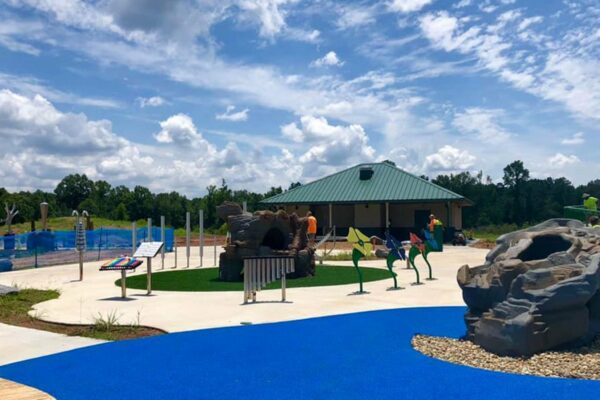Playground resurfacing comes down to safety and accessibility. To get the details right, it takes asking the right questions. If a child falls from a 10-foot slide as opposed to a 3-foot slide, what do they need to cushion the blow? How many more falls will the playground see after a rainstorm as opposed to a sunny day? We’ll look at the standards, the solutions, and the surfaces that go into the final decisions.
Play Equipment and International Standards
The goal of all standards set by an organization is to give people a set of guidelines that they can follow. While there may be differences between recommendations, the underlying purpose is the same.
Playground resurfacing is largely governed by the American Society for Testing and Materials (ASTM). This international group sets standards for materials based on fall heights. The International Play Equipment Manufacturer’s Association, a non-profit trade association, then uses these standards when evaluating playground equipment for public use.
Popular Types of Solutions
Playground solutions may include the following:
- EWF: Engineered wood fiber is made from processed wood. The material is ground down, spread, and compacted to form a stable surface. EWF must be free of twigs, leaves, paint, chemicals, or other additives. This solution is not only cost-effective, but it’s also excellent at absorbing shock and it’s ADA compliant. However, it will need to be inspected frequently to measure its depth and topped off every few years.
- Loose rubber: Made from rubber tires, this surface can come in a variety of colors. While more expensive than EWF, it’s soft, non-toxic, and free from toxic additives. This material won’t rot or absorb water, but it will require regular maintenance.
- Bonded rubber: Bonded rubber is made from larger pieces of rubber than loose rubber and bonded together to create a seamless surface. Bonded rubber can easily go on most hard surfaces, and it’s typically easier to maintain.
- PIP: A Poured in Place surface is rubber and polyurethane that are mixed together and bonded with urethane. It’s an excellent choice if you want a custom-made surface because it can be spiced up with colors, graphics, etc. This one may be on the more expensive side at first, but you may save money overall thanks to reduced operational costs.
- Rubber tile: Rubber tiles interlock together, and typically go right over a hard surface, like compacted gravel or concrete. The major drawback to rubber tile is that it can expand and contract over time, and the broken seams can cause major safety hazards throughout the playground.
- Artificial turf: Made to imitate grass, synthetic turf is cushioned by a layer of rubber or foam. A well-installed system can still accommodate wheelchairs, as it will be able to drain excess moisture. Synthetic turf is easy to patch, meaning you only have to replace certain sections over the years as they wear out.
Cost Comparisons
We’ll break down the warranties and costs of popular surfaces per square foot.
- EWF: $1.50
- Loose rubber: $4.50
- Bonded rubber: $11
- Turf: $14.50
- Rubber tiles: $16
- PIP: $17
EWF and loose rubber typically don’t come with warranties, while PIP and bonded rubber will usually provide a 5-year warranty. Artificial turf may be covered anywhere from 7 – 20 years, and synthetic turf boasts a full lifetime warranty.
The right surface for a playground comes down to a mix of factors. The location, the purpose, and the age of the children playing should all be taken into consideration when you’re trying to make the best decision.
One of the most important things that you can do is ensure you get the right installation. If the surfaces don’t meet the safety or drainage standards, it can result in everything from accidents to lawsuits. Churchich Recreation is a full-service provider of safe playground solutions, contact us today!
